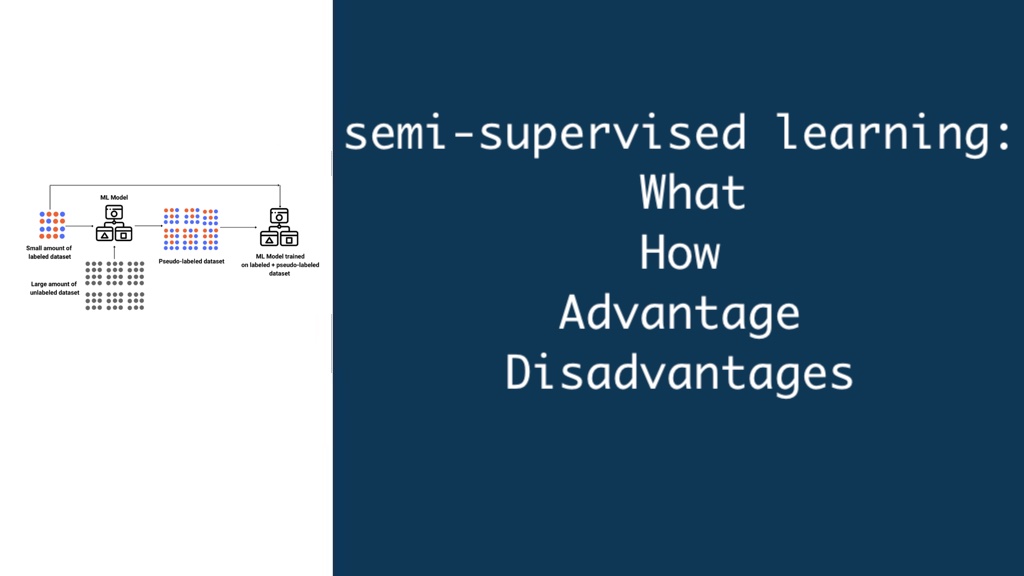Data plays a pivotal role in training models. However, obtaining large labeled datasets can be a time-consuming and resource-intensive process. This is where semi-supervised learning (SSL) emerges as a powerful approach, leveraging both labeled and unlabeled data to enhance model performance. Let’s Learn the intricacies of semi-supervised learning, exploring its underlying principles, algorithms, and real-world applications.
What is Semi supervised learning in machine learning
Semi-supervised learning combines elements of supervised and unsupervised learning techniques. It aims to leverage the strengths of both approaches by utilizing a small amount of labeled data, along with large amounts of unlabeled data, to train a model. The key advantage of SSL lies in its ability to improve model accuracy and generalization capabilities by incorporating additional information from unlabeled datasets.
How Does Semi-Supervised Learning Work?
Semi-supervised learning algorithms operate under the cluster assumption, which states that data points within the same cluster are likely to share similar labels. By utilizing this assumption, SSL methods can propagate label information from labeled data to unlabeled data points within the same cluster or based on their proximity in the feature space.
Popular Semi-Supervised Learning Algorithms
- Self-Training (Pseudo-Labeling): Initially, a supervised learning model is trained on the available labeled data. Subsequently, this model is used to generate pseudo-labels for the unlabeled data. The model is then retrained on the combination of labeled and pseudo-labeled data, iteratively improving its performance.
- Label Propagation: This graph-based approach represents data points as nodes in a graph, with edges connecting similar data points. Labels are propagated from labeled nodes to unlabeled nodes based on the graph structure, assuming that nearby nodes are likely to have similar labels.
- Active Learning: This technique intelligently selects the most informative unlabeled data points for manual labeling. The model is iteratively retrained with the newly labeled data, gradually improving its performance while minimizing the labeling effort.
Applications of Semi-Supervised Learning
Semi-supervised learning finds applications across various domains, including:
- Natural Language Processing (NLP): SSL techniques are employed to leverage large amounts of unlabeled text data, improving tasks such as text classification, sentiment analysis, and named entity recognition.
- Computer Vision: SSL methods are utilized in image classification, object detection, and segmentation tasks, where labeled data can be scarce and costly to obtain.
- Bioinformatics: Semi-supervised learning is applied to gene expression data analysis, protein structure prediction, and other bioinformatics tasks, where labeled data is often limited.
- Recommendation Systems: SSL algorithms can enhance the accuracy of recommender systems by incorporating user behavior data and content information, both labeled and unlabeled.
Challenges and Future Directions
While semi-supervised learning offers numerous advantages, it also presents some challenges. These include handling noisy or inconsistent data, selecting appropriate SSL algorithms for specific tasks, and addressing the potential for compounding errors during iterative training. Ongoing research focuses on developing more robust and adaptable SSL methods, as well as exploring their application in emerging fields like deep learning and reinforcement learning.
Conclusion:
Semi-supervised learning bridges the gap between supervised and unsupervised learning, offering a powerful approach to leverage both labeled and unlabeled data. By combining the strengths of these techniques, SSL supervised algorithms can improve model accuracy, generalization capabilities, and reduce the need for extensive labeled data. As data continues to grow exponentially, semi-supervised learning will play an increasingly vital role in extracting valuable insights and enabling innovative machine learning applications across various domains.
